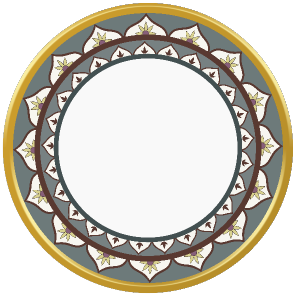

0


0

FASHION
By Sahana Rai
14 October, 2018
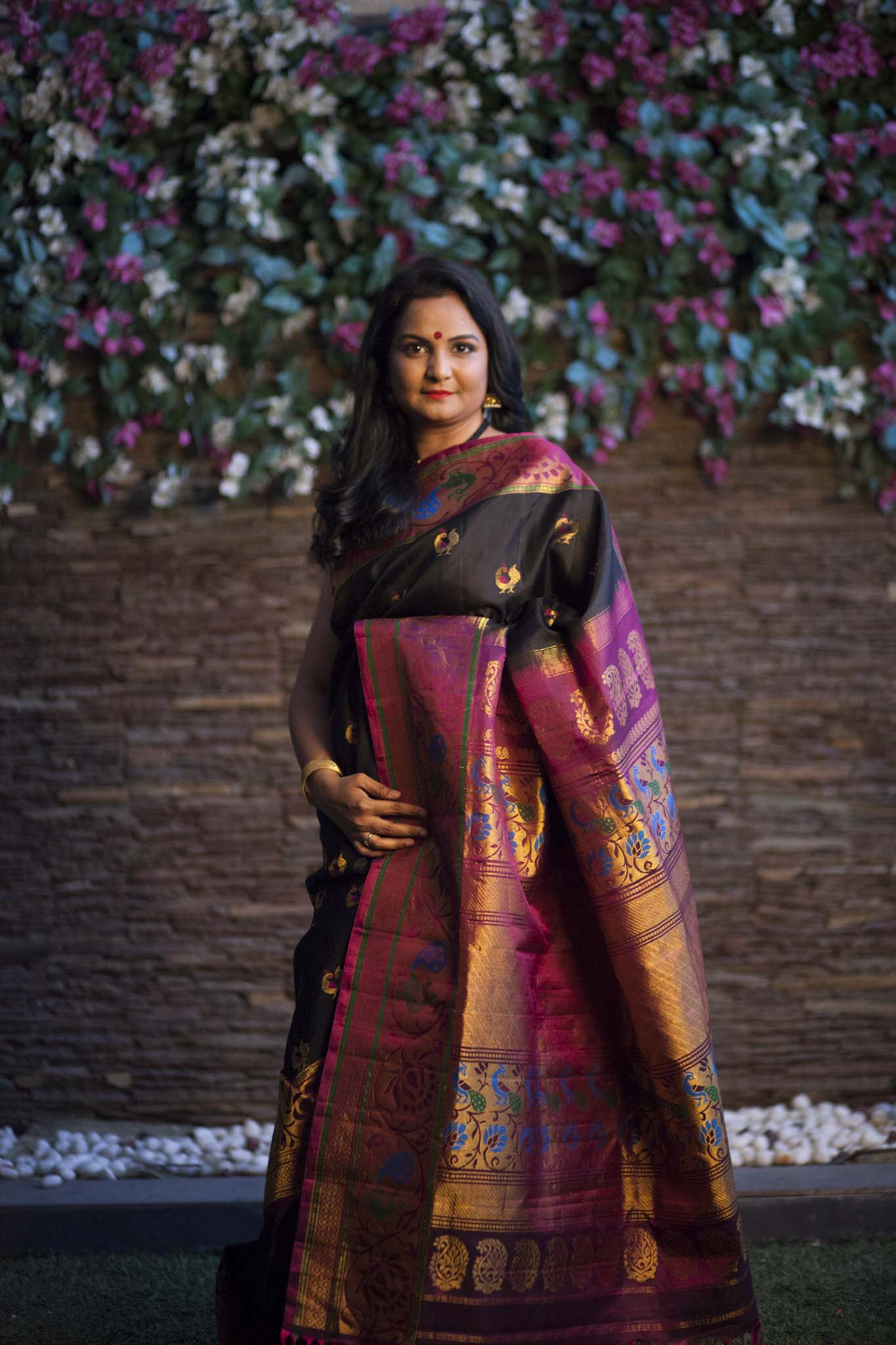
 Beige silk saree
Arati grew up in a family where work ethic was encouraged. Her father was employed in Larson and Toubro and her mother in government service. She pursued her graduation in Electronics Engineering from L&T Institute of Technology. Independence and adventure flowed through the family’s veins. Arati’s parents were adamant that their children receive a good education and grow up to become independent adults. They also had a flair for travel and trekking which naturally became ingrained in Arati as well. She married into a family with similar perspectives on exploration where achievements were both acknowledged and encouraged. Her husband is thus a first-generation entrepreneur and discussions on business and economics are common at the dinner table.
Beige silk saree
Arati grew up in a family where work ethic was encouraged. Her father was employed in Larson and Toubro and her mother in government service. She pursued her graduation in Electronics Engineering from L&T Institute of Technology. Independence and adventure flowed through the family’s veins. Arati’s parents were adamant that their children receive a good education and grow up to become independent adults. They also had a flair for travel and trekking which naturally became ingrained in Arati as well. She married into a family with similar perspectives on exploration where achievements were both acknowledged and encouraged. Her husband is thus a first-generation entrepreneur and discussions on business and economics are common at the dinner table.
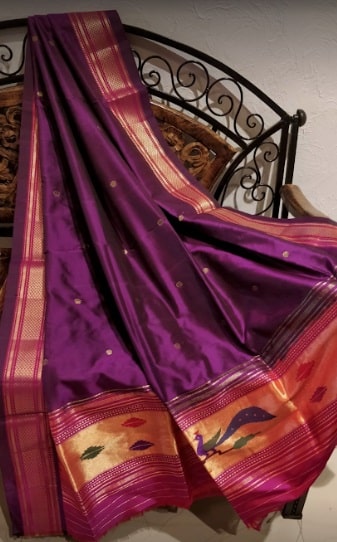 Silk stole
Arati was in an orthodox sales job for almost a decade between 2001 and 2008 but she had a change of heart turning towards the world of paithani. “I was always in awe of the different sarees that my mother would wear every day and as the years went by, my fondness for them grew as well. However, a certain chord was struck with paithani sarees during my wedding in 2006. The biggest shops in Mumbai had varieties restricted to as far as a dozen including very common and dull colours whereas I longed for the rightful vibrancy that paithani is known for”, says Arati on how her passion took wings.
Silk stole
Arati was in an orthodox sales job for almost a decade between 2001 and 2008 but she had a change of heart turning towards the world of paithani. “I was always in awe of the different sarees that my mother would wear every day and as the years went by, my fondness for them grew as well. However, a certain chord was struck with paithani sarees during my wedding in 2006. The biggest shops in Mumbai had varieties restricted to as far as a dozen including very common and dull colours whereas I longed for the rightful vibrancy that paithani is known for”, says Arati on how her passion took wings.
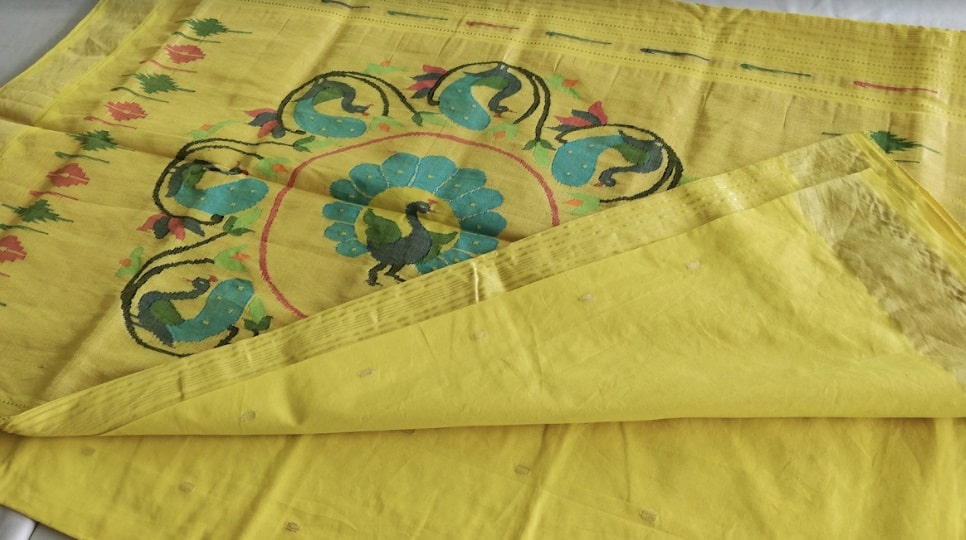 Lemon yellow paithani silk
After she stepped out of her corporate shoes in 2008, Arati was toying with the idea of exploring the online space. She put two and two together with support from her family and that is how OnlyPaithani was born. She says, “Paithani was the first thing I could think of when my brother-in-law, who was on holiday from the US at the time, recommended me to venture into the online saree market. As I kept researching, I was sad to find out that Paithani was confined to Maharashtra with bare recognition outside the state. That was the moment I decided that this beauty deserved accolades from the entire world.”
Each saree that OnlyPaithani produces is unique as most of them are not just handwoven, but also hand-dyed well. The venture works directly with weavers by cutting the threads with any middlemen or agents. Arati reveals, “We only use traditional motifs to retain the true essence of the Paithani. Apart from reviving some of the oldest motifs and weaving traditional ones such as the lotus and asawali, we also implement innovative designs including checked patterns or shades such as pastels. Our philosophy is to provide utmost authenticity to the buyer.”
Lemon yellow paithani silk
After she stepped out of her corporate shoes in 2008, Arati was toying with the idea of exploring the online space. She put two and two together with support from her family and that is how OnlyPaithani was born. She says, “Paithani was the first thing I could think of when my brother-in-law, who was on holiday from the US at the time, recommended me to venture into the online saree market. As I kept researching, I was sad to find out that Paithani was confined to Maharashtra with bare recognition outside the state. That was the moment I decided that this beauty deserved accolades from the entire world.”
Each saree that OnlyPaithani produces is unique as most of them are not just handwoven, but also hand-dyed well. The venture works directly with weavers by cutting the threads with any middlemen or agents. Arati reveals, “We only use traditional motifs to retain the true essence of the Paithani. Apart from reviving some of the oldest motifs and weaving traditional ones such as the lotus and asawali, we also implement innovative designs including checked patterns or shades such as pastels. Our philosophy is to provide utmost authenticity to the buyer.”
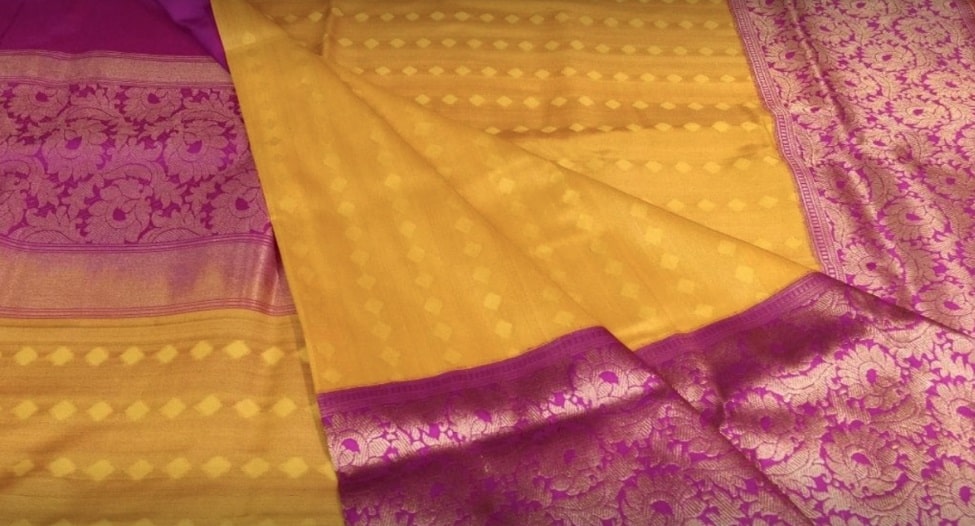 Kora silk in yellow and pink
Recently, Arati launched her Bengaluru store to complement the Mumbai outlet and online portal. While OnlyPaithani also holds several exhibitions in different cities throughout the year, the bootstrapped venture is looking to step on the gas with a vision to launch stores in all major cities within the next five years.
The products range from sarees to dresses for children, encompassing almost every ethnic wear for men and women including kurtas, dupattas, and dhotis (paithani), all of which are quite in demand. The collection is mesmerizing and even handloom aficionados are in for a surprise with a wide range of handloom fabrics such as Gadwal, Irkal, Ikkat, Benarasi, and Maheshwari, covered under one umbrella.
Kora silk in yellow and pink
Recently, Arati launched her Bengaluru store to complement the Mumbai outlet and online portal. While OnlyPaithani also holds several exhibitions in different cities throughout the year, the bootstrapped venture is looking to step on the gas with a vision to launch stores in all major cities within the next five years.
The products range from sarees to dresses for children, encompassing almost every ethnic wear for men and women including kurtas, dupattas, and dhotis (paithani), all of which are quite in demand. The collection is mesmerizing and even handloom aficionados are in for a surprise with a wide range of handloom fabrics such as Gadwal, Irkal, Ikkat, Benarasi, and Maheshwari, covered under one umbrella.
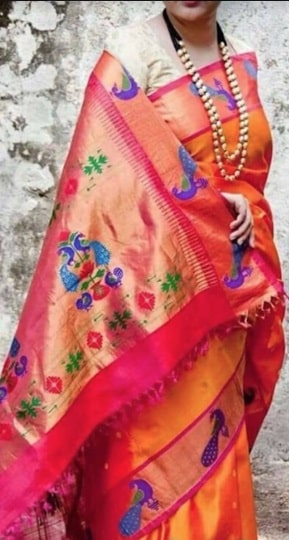 The conception that sarees are a tedious garment to wear is changing now and it is being increasingly appreciated and worn even by the younger generation today. The saree-specific movements such as the #100sareepact, #sareespeak and others on social media are a testament to this fact. Many young executives and bankers have begun to prefer sarees to work revealing they’re making a massive comeback. This bodes well for traditional artistry in the form of fabrics such as paithani indicating that the era of royalty and grace is upon us again.
For more interesting content and interviews, follow our online digital magazine BananiVista. You can also “Like” and “Follow us” on Facebook.
The conception that sarees are a tedious garment to wear is changing now and it is being increasingly appreciated and worn even by the younger generation today. The saree-specific movements such as the #100sareepact, #sareespeak and others on social media are a testament to this fact. Many young executives and bankers have begun to prefer sarees to work revealing they’re making a massive comeback. This bodes well for traditional artistry in the form of fabrics such as paithani indicating that the era of royalty and grace is upon us again.
For more interesting content and interviews, follow our online digital magazine BananiVista. You can also “Like” and “Follow us” on Facebook.